
- Website link: Caprock Canyons
- Hiking (25 miles of trails), biking, swimming, canoeing/kayaking, fishing, horseback riding. There is also a great scenic drive.
- For RV and tent campers, Honey Flat Campground offers water, electricity, restrooms, showers, and a playground. Book early!
- Tent and basic camping areas offer water only, and primitive campsites are also available in the park.
- Equestrian campground available.
- Backcountry camping is allowed anywhere along the Trailway. Check the website for Trailway information.
- When to go: anytime. We like spring and fall.

Caprock Canyons State Park, located near the small town of Quitaque (Kitty-Quay), Texas, is the home of the official Texas State Bison Herd. In addition to the bison (they have the run of the park, by the way) this park has stunning scenery and is a place to literally get away from it all. Set off on one of the great trails and immerse yourself in the rugged beauty of this West Texas gem.
 *Caprock Canyons State Park is:
*Caprock Canyons State Park is:
102 miles from Amarillo, Texas — 96 miles from Lubbock, Texas — 170 miles from Wichita Falls, Texas
Our trip is going to start from Lubbock, Texas, as it is the closest city with a major airport.
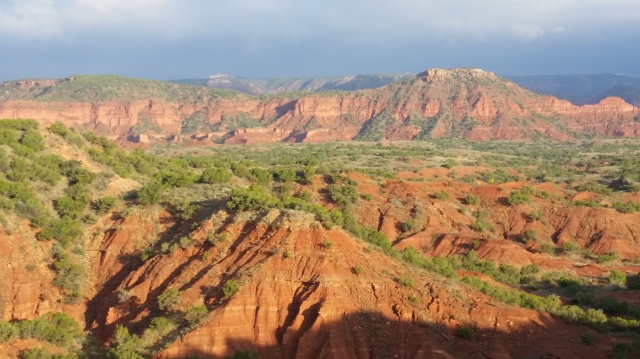
Getting There
⇒From Lubbock, take I-27 north toward Plainview, and then continue north to Tulia. At Tulia, take Highway 86 east toward Silverton, and then continue east to Quitaque. Drive time between Lubbock and Caprock Canyons: 1.75 hours.
→Note: a visit to Caprock Canyons is an easy day trip from Lubbock or Amarillo, however, we recommend staying for a day or two (or longer) to enjoy everything this park has to offer.
There are a few accommodations in the area, including a bed and breakfast in Quitaque, a hotel in Turkey (11 miles east), and a couple of RV campgrounds. Here are the website links: Quitaque and Turkey.
Travel tip: there’s a vintage cottage gas station in Turkey that is worth driving the 11 miles to see.

Destination: Caprock Canyons State Park

We hiked the Canyon Rim Trail on an overcast day. The scenery was gorgeous, but the pictures, unfortunately, do not do it justice. The wildflowers really put on a show, though.


The scenic drive along the park road enables you to get up close and personal with some the features of the park. Below are a few shots of the beautiful scenery along the road.

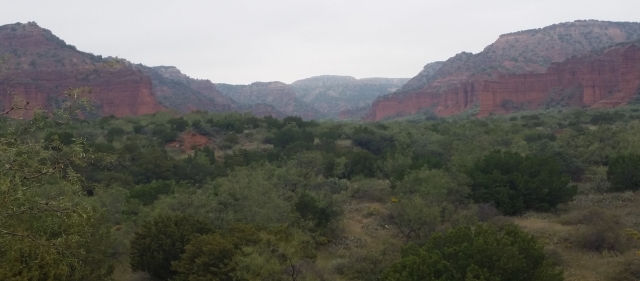


Be sure to stop at the pull outs and learn about the park. While you’re at it, stop by the visitor center for books and information about Charles Goodnight and his wife, Mary Ann. They are responsible for preserving the predecessors of the bison herd that calls Caprock Canyons home. It’s a very interesting story, especially since American bison were once on the verge of extinction. We find the bison enchanting, and fun to watch, but always from a distance. These are wild animals that can be dangerous, and it is illegal to approach or feed them.

The video below was taken early in the morning while the herd was walking from wherever they spent the night to a grassy grazing area.
That’s our overview of Caprock Canyons State Park and Trailway. Thank you for joining us. We hope that our post has prompted you to visit this great park. As we always say, “Just get in the car.” Please leave us a note and tell us about your trip to Caprock Canyons, or any of your trips for that matter. Maybe you will inspire us to take your trip!

Travel safe, travel smart, and we will see you down the road.
Mike and Kellye

As always, we strive to be as accurate with our information as possible. If we made a mistake, it was unintentional. (Hey, we’re only human!) We aren’t paid for our recommendations, and we only recommend our own tried and true vendors and venues. Our suggestions are for places that we’ve heard good things about but haven’t visited personally, and our opinions are our own.
©2018



 Arguably, Death Valley holds the record for the hottest temperature ever recorded on earth – 134º F in July of 1913. Badwater Basin is the lowest point in North America, sitting at 282 feet below sea level. With an average of 1.5 inches of rain per year, Death Valley also holds the honor of being the driest place in North America. We are used to hot, dry weather where we live, but the 111º F (before noon) temperature when we visited Death Valley felt like a different type of oppressive heat that seemed heavier to us for some reason. With that said, we caution you to be conscious of the weather and prepare for harsh conditions when visiting this park, especially in the late spring, summer, and early fall. Also, make sure your car is in tip-top condition before starting a road trip through Death Valley.
Arguably, Death Valley holds the record for the hottest temperature ever recorded on earth – 134º F in July of 1913. Badwater Basin is the lowest point in North America, sitting at 282 feet below sea level. With an average of 1.5 inches of rain per year, Death Valley also holds the honor of being the driest place in North America. We are used to hot, dry weather where we live, but the 111º F (before noon) temperature when we visited Death Valley felt like a different type of oppressive heat that seemed heavier to us for some reason. With that said, we caution you to be conscious of the weather and prepare for harsh conditions when visiting this park, especially in the late spring, summer, and early fall. Also, make sure your car is in tip-top condition before starting a road trip through Death Valley.





























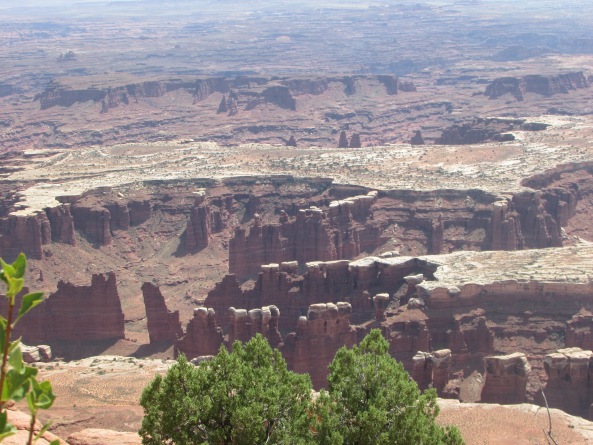

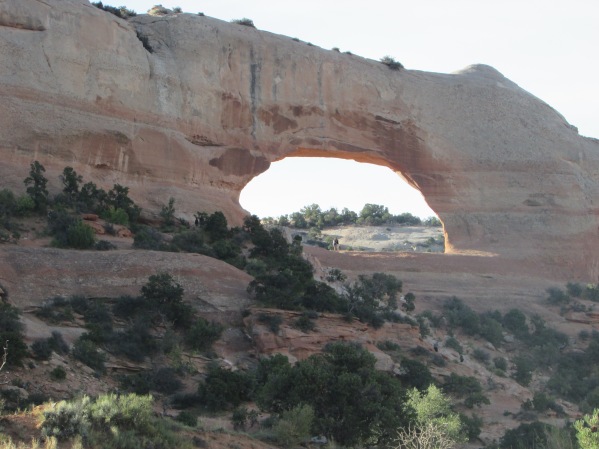
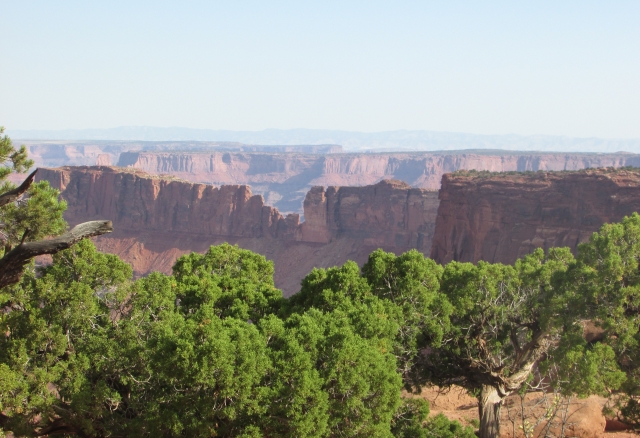
 Natural Bridges National Monument – 2 hours;
Natural Bridges National Monument – 2 hours;